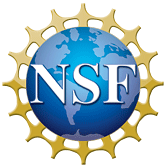Jobs:Job-01939
Apply before: 7 January 2026
|
Posting:
Position: 1 PhD Position
Apply before: 7 January 2026
Apply online:
|
Project overview
The Peruvian Amazon contains some of Earth's most dynamic river systems; channels can migrate by hundreds of metres annually. In many places, these rivers are cutting into extensive tropical peatlands, among the most carbon-rich ecosystems in the Amazon, releasing carbon that has taken thousands of years to build up. Unlike carbon stored in forest biomass, which can be replaced within decades as vegetation regrows, peatland carbon lost to erosion is permanently removed. This represents a potentially significant but unquantified contribution to global carbon budgets. As climate change brings more intense rainfall and increasing river discharge, larger floods are expected to accelerate carbon removal from peatlands and floodplain forests through increased riverbank erosion. Quantifying these climate-driven changes alongside human alterations such as dam construction, deforestation, and channel dredging is essential for understanding carbon fluxes and improving carbon budgets.
Working in some of the most spectacular landscapes of the Peruvian Amazon, the successful candidate will investigate how river dynamics influence the storage, erosion, and transport of carbon within these geodiverse environments. The project combines hands-on fieldwork with cutting-edge technical and computational approaches, including remote sensing, automated data analysis, and the application of machine learning techniques.
Project goals
This project will quantify carbon removal from peatlands and forests by rivers in the Peruvian Amazon by:
Developing automated remote sensing workflows using Google Earth Engine (GEE) to map riverbank erosion and deposition using 40+ years of satellite imagery (Landsat, Sentinel, Planet) at monthly to annual timescales.
Conducting fieldwork campaigns along four rivers (Ucayali, Marañón, Tigre, and Chambira) with the Instituto de Investigaciones de la Amazonía Peruana (IIAP) to characterise riverbank properties and assess how carbon is being mobilised during flood events.
Integrating remote sensing observations with above-ground (forest biomass) and below-ground (peatland and mineral soil) carbon stock datasets, providing river-scale estimates of carbon removal.
Applying machine learning models to predict future change and establish mechanistic links between river-floodplain dynamics and carbon mobilisation. The workflow will be transferable, providing a framework that can be applied to tropical river-floodplain systems worldwide. Skills, techniques and training
You will receive comprehensive training in:
Fieldwork: During repeat field visits to the Peruvian Amazon, you will learn how to sample sediment and organic material from riverbanks, and apply remote sensing techniques to characterise riverbank properties (e.g., repeat LiDAR scanning, time-lapse photography). Local experts from IIAP will ensure safe working in remote tropical environments.
Satellite remote sensing: You will develop advanced skills using Google Earth Engine for large-scale geospatial analysis, working with multi-sensor satellite data to track environmental change. You will develop programming skills in JavaScript and Python/R.
Laboratory analysis: Analytical techniques for measuring carbon content in sediment and organic materials.
Big data analytics and machine learning: You will handle large geospatial datasets and develop machine learning models to predict future riverbank erosion and carbon removal.
During a three-month bridge placement with our CASE partner RED YAKU, you will gain hands-on experience of consulting work. You will join RED YAKU’s team and contribute to delivering science-driven solutions to hydro-environmental challenges across South America.
These skills are in high demand across academic and non-academic roles (e.g., environmental consultancy, climate/carbon consultancy, Earth observation, conservation organisations, and natural capital services).
Notes and details of how to apply are available here: https://accedtp.ac.uk/how-to-apply/
All applicants to ACCE+ must complete an online application form (see the relevant webpages for full details per ACCE+ partner). This form consists of questions that replace a traditional CV, questions about the project/s you are applying to, and the questions that make up the ACCE+ guided personal statement proforma. The personal statement proforma questions are designed to standardise this part of the application to minimise the difference between those who are given support and those who are not. In addition, depending on which ACCE+ University you apply to, you may be asked to submit additional documents via email (all details are in the online form and the ACCE+ page for each University).
Link to application details: https://accedtp.ac.uk/acce-dla-opportunities-at-university-of-liverpool/